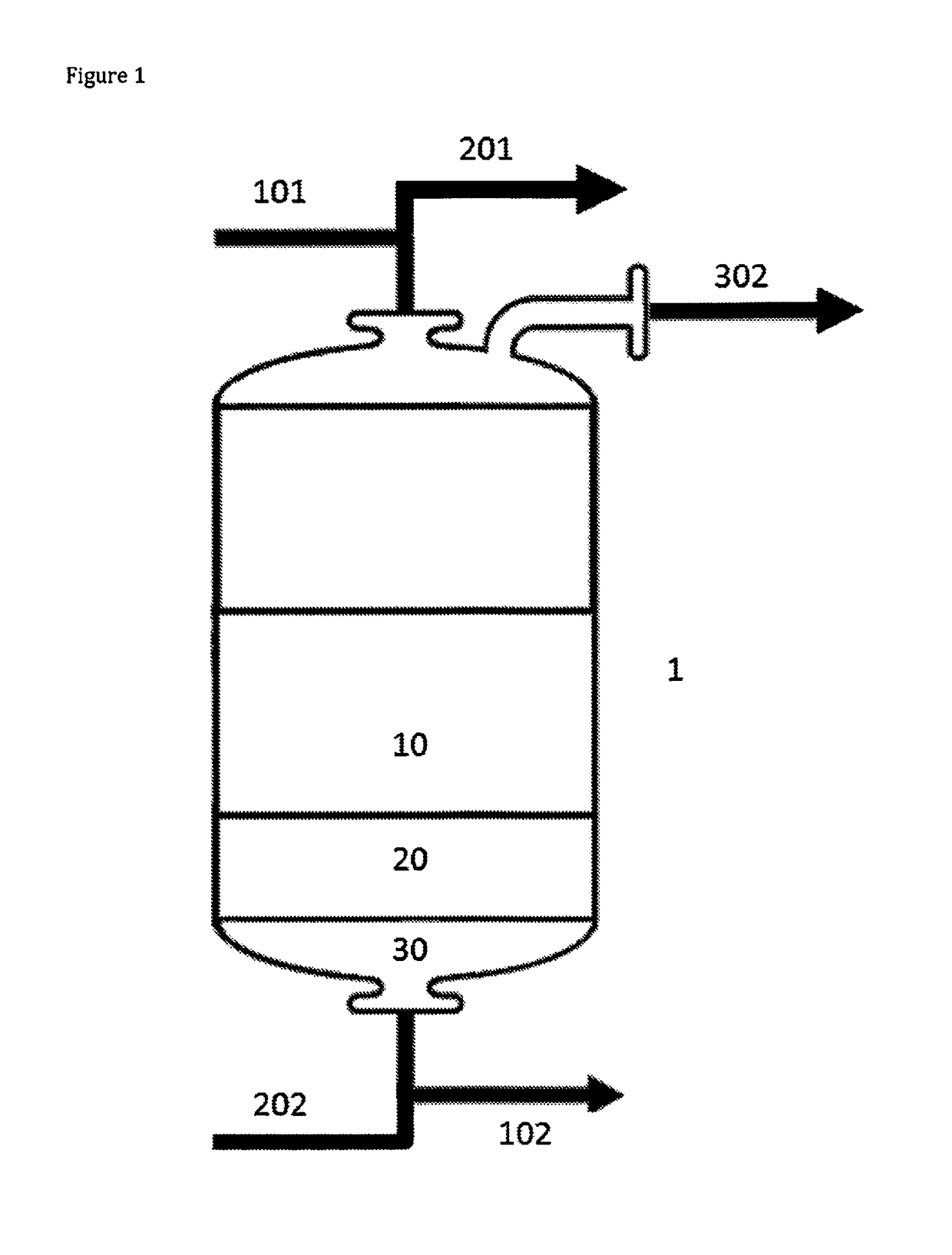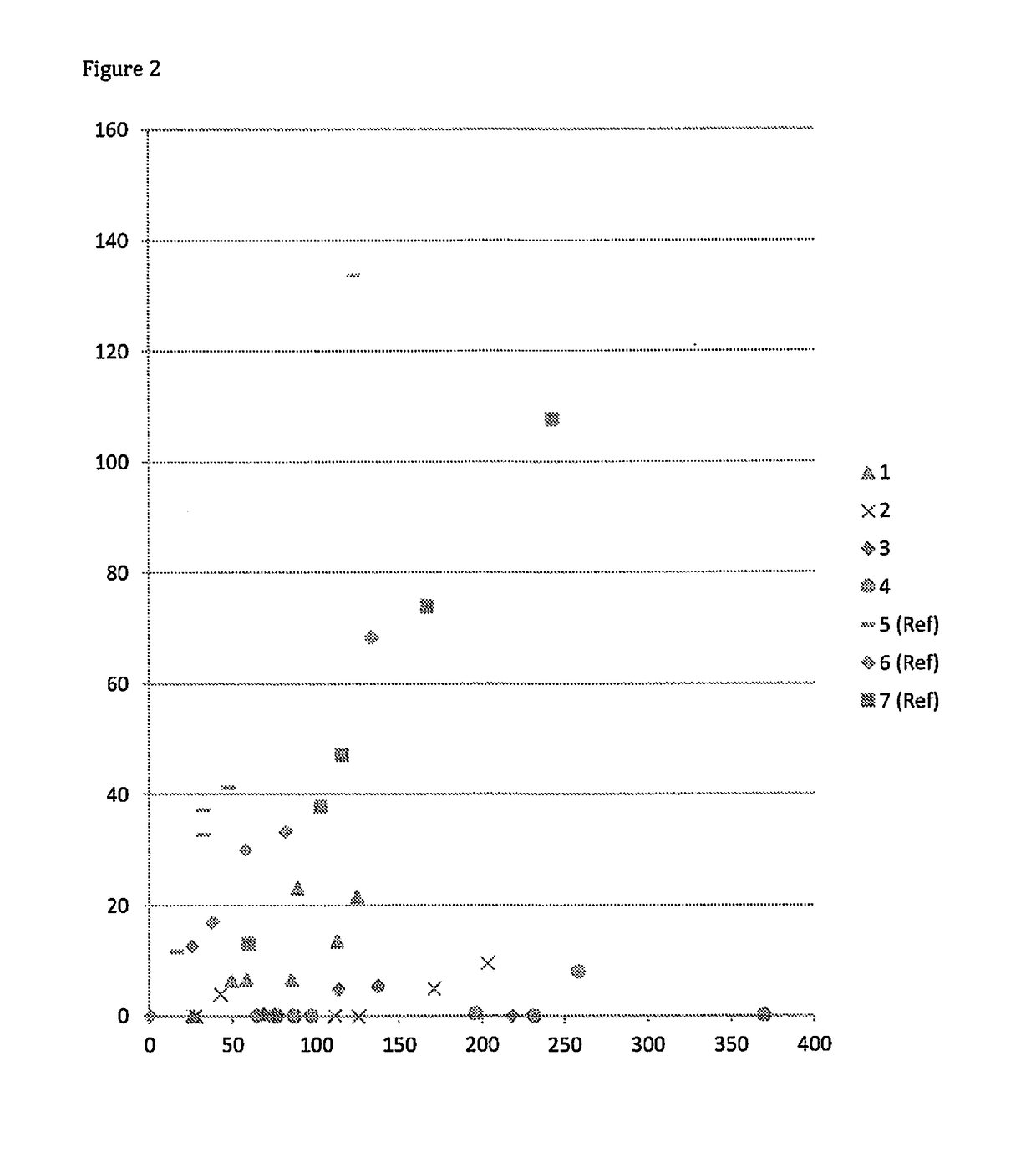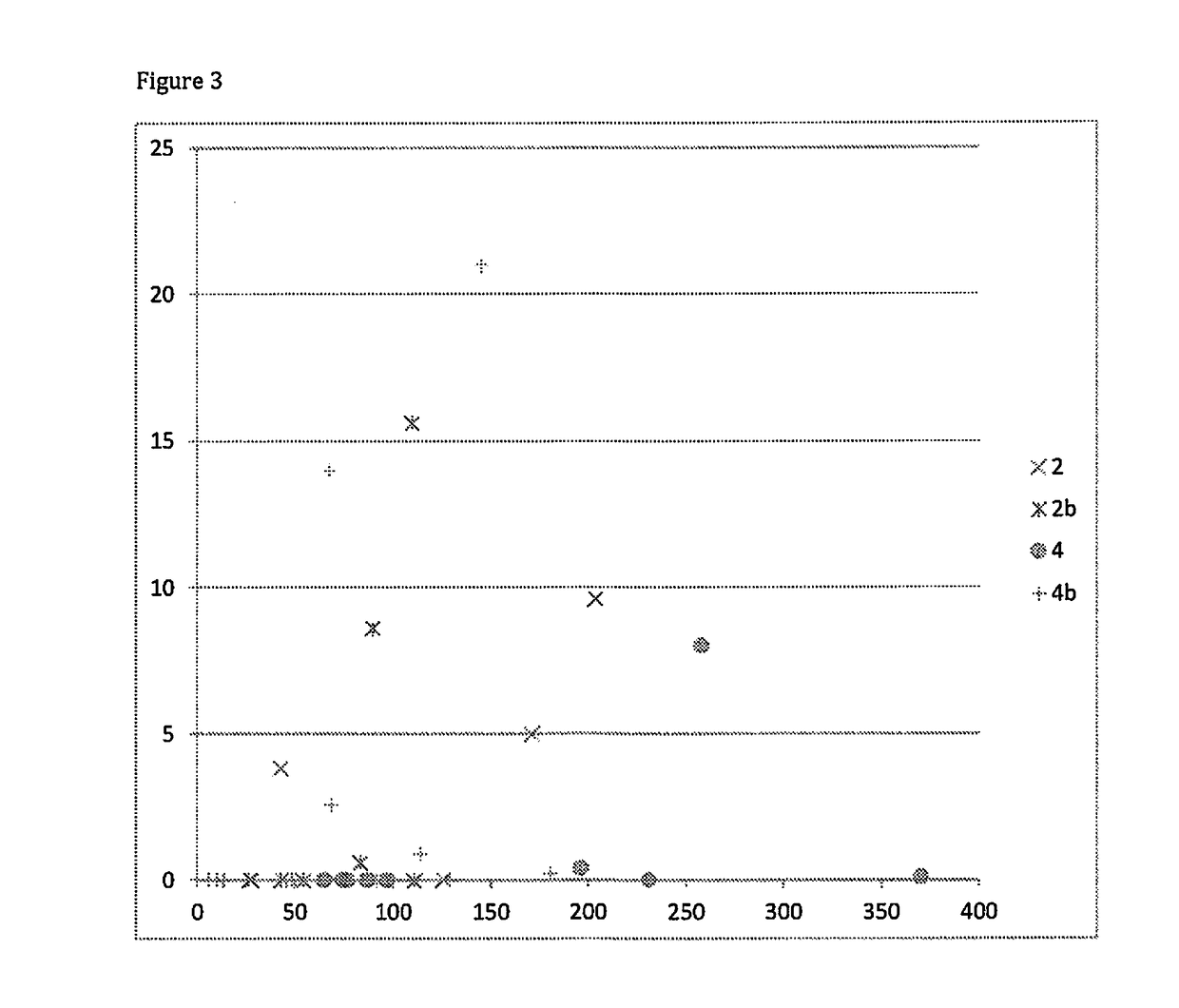Removal of organic solvents from aqueous process streams
- Summary
- Abstract
- Description
- Claims
- Application Information
AI Technical Summary
Benefits of technology
Problems solved by technology
Method used
Image
Examples
example 1
[0040]Indicated filter medium was packed in a column. The thickness of the filter medium was the same in each case. Flux rate of an aqueous electrolyte stream containing organic solvents, CuSO4 and H2SO4 through the filter cross section area was 19.6 m / h. The inlet concentration of the organic solvents was varied as indicated. FIG. 2 shows results from testing the separation efficiency of the organics through the column.
[0041]The tested glass granule filter media were:
[0042](1) Silibeads 0.5-0.75 mm
[0043](2) Silibeads 0.4-0.6 mm
[0044](3) Silibeads 0.25-1.0 mm
[0045](4) Cerablast 0.4 mm
[0046]The tested reference particles were:
[0047](5) Mullite 60 granules 0.5 mm
[0048](6) Stainless steel balls 0.5 mm
[0049](7) Anthracite 0.9 mm
example 2
[0050]The above described test was repeated at two different flux rates to demonstrate that increased flux does not compromise the separation efficiency of the glass particles. FIG. 3 shows results from this test.
[0051]The tested glass granule filter media and flux rates were:
[0052](2) Silibeads 0.4-0.6 mm 19.6 m / h
[0053](2b) Silibeads 0.4-0.6 mm 37.0 m / h
[0054](4) Cerablast 0.4 mm 19.6 m / h
[0055](4b) Cerablast 0.4 mm 37.0 m / h
PUM
| Property | Measurement | Unit |
|---|---|---|
| Length | aaaaa | aaaaa |
| Fraction | aaaaa | aaaaa |
| Fraction | aaaaa | aaaaa |
Abstract
Description
Claims
Application Information
 Login to View More
Login to View More - Generate Ideas
- Intellectual Property
- Life Sciences
- Materials
- Tech Scout
- Unparalleled Data Quality
- Higher Quality Content
- 60% Fewer Hallucinations
Browse by: Latest US Patents, China's latest patents, Technical Efficacy Thesaurus, Application Domain, Technology Topic, Popular Technical Reports.
© 2025 PatSnap. All rights reserved.Legal|Privacy policy|Modern Slavery Act Transparency Statement|Sitemap|About US| Contact US: help@patsnap.com



